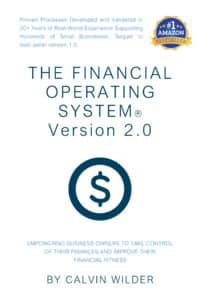Step #1 of The Financial Operating System: Identify Your WHY

The first and most critical step in the Financial Operating System is to define your business goals. Before you can manage to metrics, improve performance, or grow strategically, you need to understand your “why.” That means taking a moment to clearly identify what you want to achieve by owning your business. Is your goal financial freedom, more time with your family, building a business you can sell, or all of the above?
Defining your business goals helps clarify what success looks like for you. These goals typically fall into three main categories: financial results, work-life balance, and your desired business model. Each of these elements plays a role in shaping decisions around growth, hiring, pricing, and operations.
For example, if financial independence is your top priority, your strategy might focus on maximizing profitability and building recurring revenue. If work-life balance matters most, you might choose to limit the number of clients or employees you manage. Knowing your goals helps you avoid chasing metrics that don’t align with your definition of success.
When you define your business goals, you create a roadmap that guides future decisions. This clarity enables better prioritization and makes it easier to communicate your vision to your team. It also lays the foundation for the next steps in the Financial Operating System, including defining key metrics, setting financial targets, and evaluating performance.
Importantly, your goals may evolve as your business grows. Reassessing them regularly keeps your strategy aligned and relevant. Having your “why” defined keeps you focused when distractions arise and provides direction when tough choices must be made.
Want a practical way to define your business goals? Step #1 of the Financial Operating System walks you through the process in detail. Download a free excerpt below and start building a business that aligns with what you truly want, both financially and personally.
Click Here to Download Step #1
